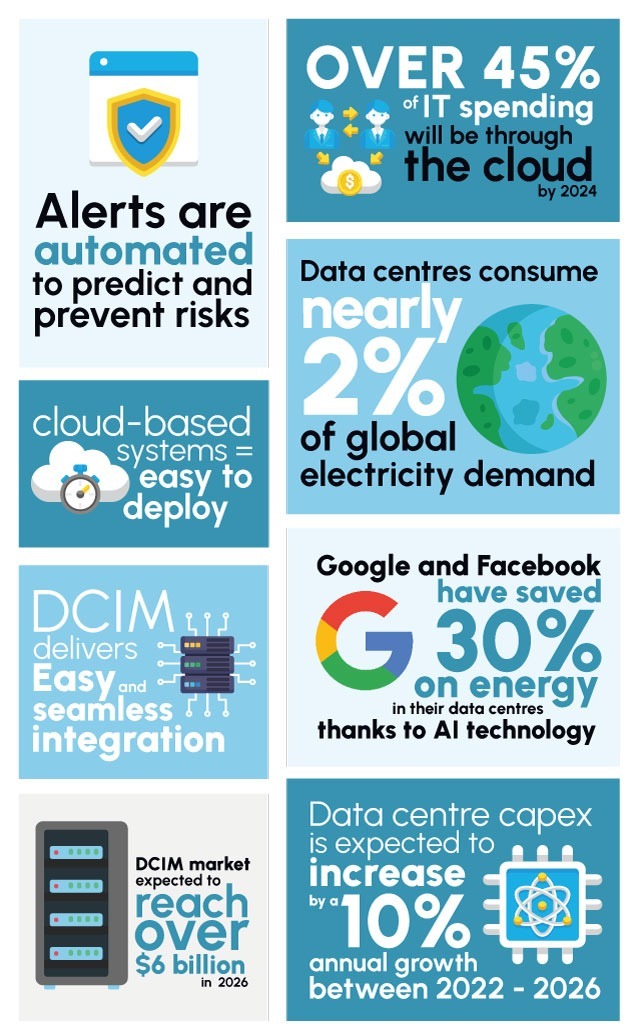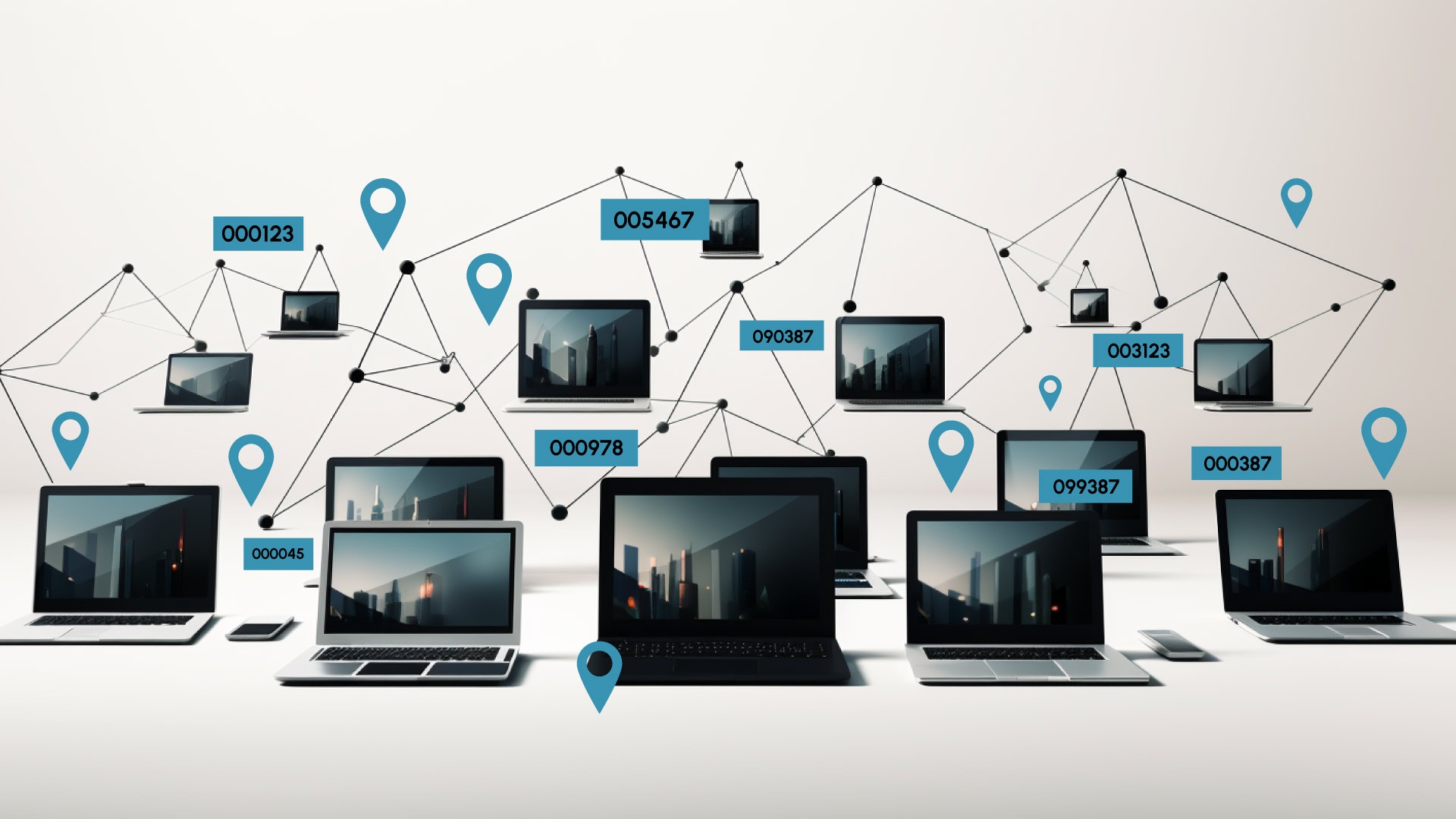Table of Contents
ToggleHere Comes the Future of DCIM
Next-gen Data Centre Infrastructure Management (DCIM) software, powered by predictive analytics and cloud connectivity, is a pretty big deal. And it’s not just us saying it. Not only is it shaping the DCIM market, which is expected to reach over $6 billion in 2026, but it is also transforming the way our industry is run.
Traditionally, old-style DCIM provided data centre managers with on-premises solutions, enabling monitoring and planning to manage capacity, change and assets. Old-style DCIM risk management revealed some serious drawbacks however – once an alert is discovered, recovery times are limited to staff’s ability to respond on the ground. More often than not downtime is already happening, costing a business time and money.
Next-gen DCIM delivers all the basics that traditional solutions offer, but with the huge difference that the software can be hosted in the cloud, delivering functionality that isn’t available on-premises. Easy to deploy, combined with (like you’ll find with Assetspire’s software), seamless integration and automated updates means it addresses many of the pain points experienced by traditional DCIM. Alerts are automated and risks are identified rapidly, accelerating response times and bringing a multitude of benefits to data centre providers.
Machine learning capabilities render next-gen software solutions invaluable, giving almost mystical prescient powers to predict outages before they happen – empowering data centre managers to react fast, and solve issues before they grow into disasters.
The future is bright for next-gen DCIM software. But where does it sit within a modern data centre?

Knowledge is Power in DCIM?
Having full visibility of all equipment, even in off-site locations brings obvious benefits to any business where tight auditing processes and rigid compliance regulation is a critical business need. If you are able to quickly and accurately locate, ID and report on every single asset within any organisation, you can undoubtedly increase efficiency and eliminate inaccuracies.
Implementing intelligent Data Centre Infrastructure Management software also brings some pretty impressive benefits when it comes to meeting, and beating, your sustainability targets.
Knowing what you have, where it is and what it is doing, allows your business to save both wasted energy and wasted costs. If you can see where money is being spent needlessly – on outdated equipment or powered down servers for example – you can divert that spend to other priorities or upgrade your infrastructure as necessary.
According to the Dell’Oro Group, data centre capex is expected to increase by a 10% compound annual growth rate between 2022 and 2026. With the era of ‘big data’ upon us, data demands are only going to continue to skyrocket. However, with such growth comes a quandary.
There’s no getting away from the fact that data centres represent a fairly sizable chunk of global power consumption and emissions and the industry is grappling with how to achieve this expansion sustainably under increasing scrutiny from regulators and customers alike. In real terms, recent reports estimate that globally, data centres consume nearly 2% of global electricity demand – between 196TWh and 400TWh!
The answer? A more accurate ‘whole-world’ view of your assets. Next-gen DCIM gives you control over your energy efficiencies, your budgets and future optimisation.

Next-gen DCIM Software and Remote Control of Data Centres
The COVID-19 pandemic prompted both small and large-scale industries to make the shift from traditional office-based working to remote operations. Data-centre based companies followed suit and found themselves facing a whole host of challenges around accurate and reliable asset monitoring and reporting, and in the height of the pandemic, businesses were forced to face a dramatic evolution in the way data centres needed to be managed.
All of a sudden, new ways of working needed to be found, all while maintaining business critical operations as normal.
Infrastructure upgrades were implemented and continue to form a notable chunk of future data centre architecture considerations.
The need for accurate reporting and full visibility of assets has been especially important in organisations coming back up to full strength after the unprecedented disruptions of the COVID-19 pandemic.
This is particularly true in post COVID-19 operations. Even with an increased uptake of remote working, which has continued even post-pandemic, the complex and distributed reality of contemporary data centres and edge centres presents challenges which can only be solved by having a systematised and finely-tuned solution.
But this isn’t necessarily a bad thing! Remote data centre management offers some exciting opportunities.
Google and Facebook have credited AI for big changes in their data centre efficiency, claiming to have halved their energy usage and delivering savings of an estimated 30% – all through introducing AI systems to manage their cooling, asset cycles and processes.
With next-gen DCIM software solutions, data centres have the opportunity to optimise all aspects of their operations. Even large-scale data centres are able to be reactive to change and stay in control of changing assets, implementing dynamic, intelligent and effective day to day management.
Remote and cloud-based AI systems are simply part of the fabric of data centre management in 2022. According to Gartner, it is predicted that by 2024, over 45% of IT spending on infrastructure software, applications and system infrastructure will be through the cloud.
Having a dependable and adaptable next-gen DCIM software solution is key as data centre enterprises begin to rely more heavily on a mix of on-premise private clouds, public clouds and legacy platforms to meet their DCIM needs.
For more on this subject, take a read of our blog ‘AI in Data Centres: The Rise of Smart Assets’

The Future of DCIM is Clear
A critical tool in the quest for reliable and reportable data centre processes, DCIM already has a powerful proven track record.
Despite still being in its relative infancy, DCIM has already transformed the way a multitude of different businesses view their operations and feel confident in their knowledge and visibility of all their IT assets. Regulated industries with special sensitivity to compliance and auditing, such as those in the financial and data service provider sectors can feel confident in having full control of all their assets, at all times.
The right DCIM implementation allows managers to optimise data centre operations, prevent risk and unplanned downtime, and also free up resources. Assetspire’s innovative DCIM solutions offer game-disrupting DCIM software – talk to us today and try a demo.




